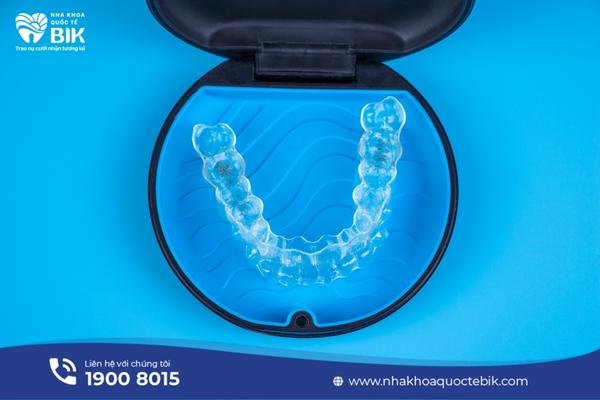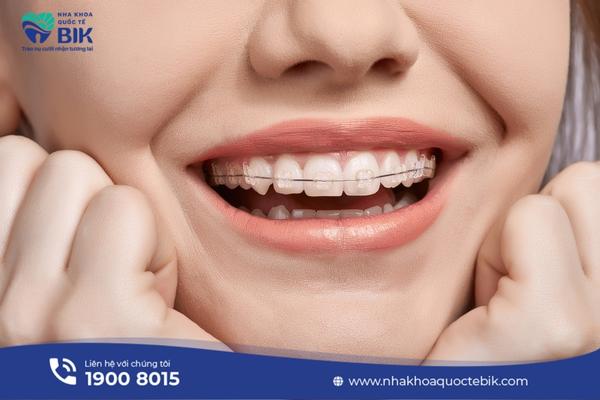Orthodontics is a popular cosmetic method for smiles today. This process includes many stages, in which closing the space in braces is the stage that you need to pay attention to. So, what is closing the space in braces? How does it happen? Let’s explore this issue in detail with BIK International Dental Clinic in the article below!
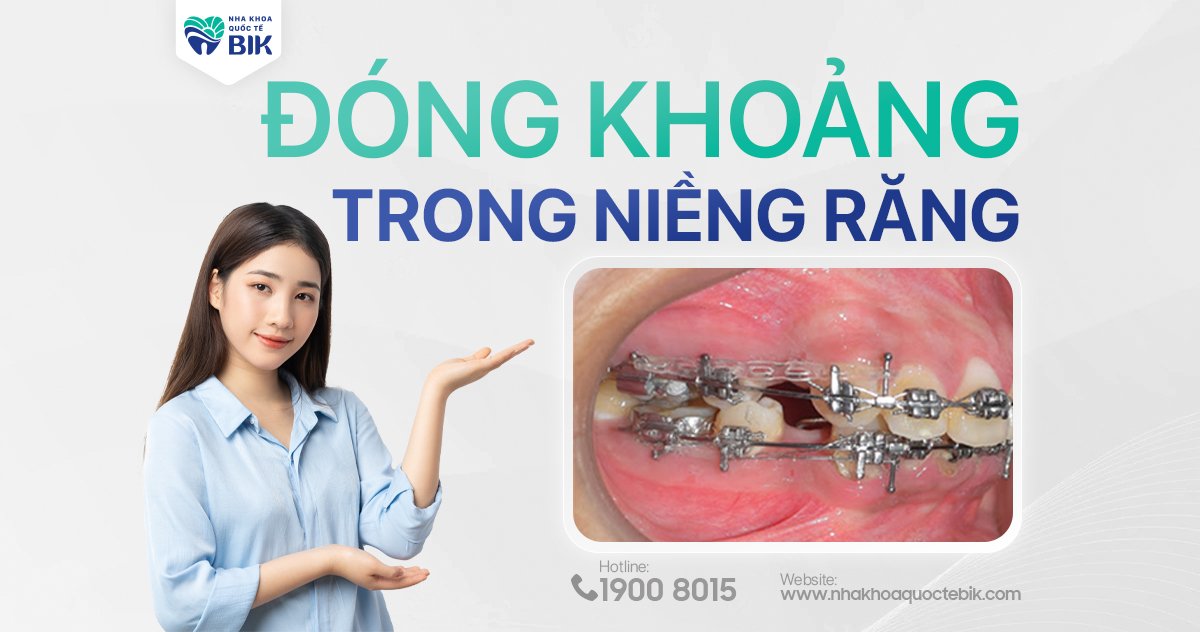
What is the space closing stage in braces?
In the orthodontic process, closing the space in braces is the third stage. At this stage, the gaps in the jaw will be adjusted by applying strong tightening force, helping to pull the teeth back to the correct position after the tooth roots and tooth axes have been aligned fairly evenly.

Stages in braces
The time required to complete the braces process can last from 18 to 24 months, depending on the condition of the teeth and mouth. During this process, the patient needs to be patient and follow the doctor’s treatment plan to achieve the desired results.
The stages of the orthodontic process will take place as follows:…
Straightening teeth stage
This is the first stage of the orthodontic process. After having a detailed treatment plan for each specific patient case, the doctor will attach devices such as braces and archwires to the teeth.
During this stage, the doctor will adjust the pushing and pulling force on the braces and archwires to gradually move and straighten the teeth. The time to straighten teeth usually lasts from 2 to 6 months, depending on the condition of each person’s teeth. Initially, when tightening the archwire, the patient may feel pain and discomfort. However, do not worry too much because this feeling usually only lasts about 2-3 days.
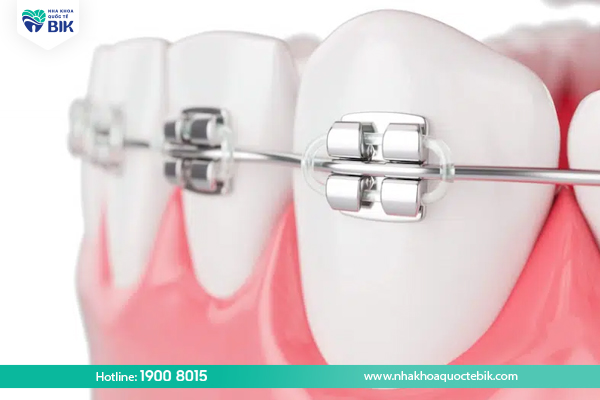
Tongue adjustment phase
The doctor will begin adjusting the position of the teeth by using an archwire to create traction. The traction from the archwire will help straighten the rotated, misaligned, and crooked teeth. This process can last from 2 to 4 months. Once completed, the teeth will be straighter and more stable.
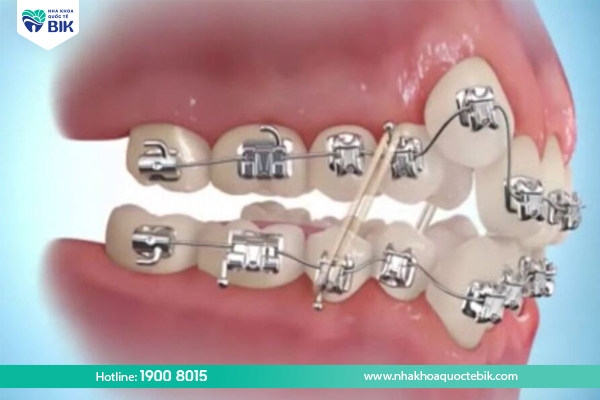
Tongue space closing stage
After the teeth have been adjusted fairly evenly, the braces process will continue with the space closing stage. The goal of this stage is to make the gap in the jaw after tooth extraction more closed.
Tongue space closing lasts from 4 to 8 months. During this time, the patient will feel a clear change in the teeth, such as more even crowding, narrowing the gap between the teeth, protruding teeth being pushed back, and buck teeth being pushed out.
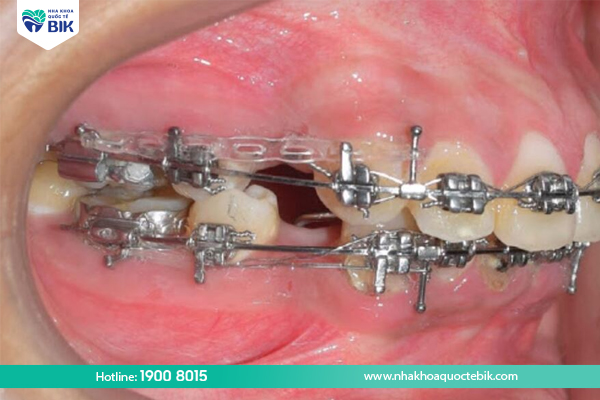
Vertical closing stage
This is an important time for the chewing function of the teeth after the orthodontic process. The doctor will attach elastics from the upper jaw to the lower jaw in a straight line. This helps the two jaws fit and contact evenly.
If the treatment in the previous stage is done well, the closing will take place quickly in just 2 – 8 weeks. This is also the stage that solves most problems related to teeth such as open teeth and incorrect bite.
Retention phase
After removing the braces, the doctor needs to fix the teeth that have moved to ensure they do not return to their original position.
The time to wear the braces will vary from person to person, usually lasting from 6 months to 1 year, depending on the condition of the jaw, the choice of the braces…
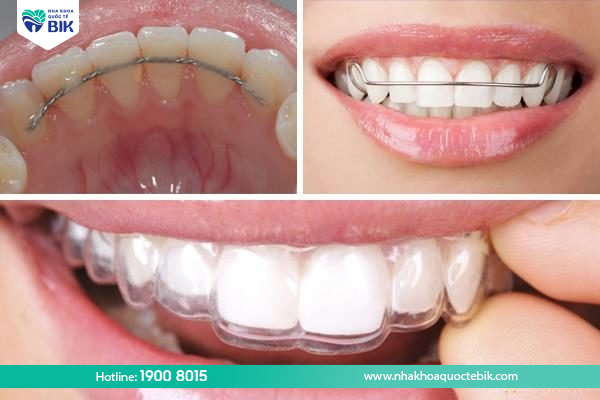
How does the space closing phase in braces take place?
Space closing in braces plays an important role in improving the aesthetics of the treatment results. During this stage, the doctor will replace the regular arch wire with a Stainless Steel wire to increase the stiffness and pressure of the braces. This process is performed as follows:…
Pulling the front teeth back
In cases of buck teeth or teeth that protrude too much, the doctor will adjust the pulling of the teeth back to balance the bite and ensure the harmony of the teeth.
The front teeth will be adjusted sequentially by using elastic bands or springs with 2 hooks to push the teeth back.
Pulling the back teeth forward
This method is applied in cases of buck teeth. The doctor will place a chain elastic or spring on the first tooth and then pull the back teeth forward. The procedure is similar to pushing the first tooth back, except for the position of the chain elastic or spring.
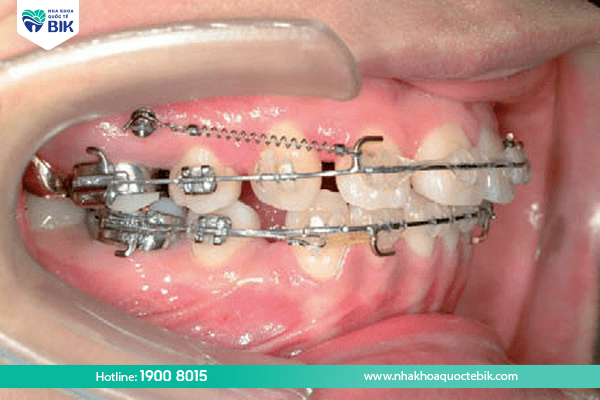
Combining the front teeth back and back teeth forward
This method will combine both the back and front teeth into fixed blocks at the same time. Then, the doctor will pull the two blocks closer together and use elastic bands or springs to keep the two jaws together.
How long does it take to close the space in braces?
The braces process usually lasts from 4 to 8 months, but can be adjusted shorter or longer depending on a number of factors such as:
- Age of the patient: Older people often have stronger bones, making the process of moving teeth more difficult and slower.
- The method of adjusting teeth and braces: Using a ring-pulling mechanism will help shorten the time compared to using springs. Because the spring can slide on the archwire, it creates friction, making the process of moving teeth slower.
- Condition of the appliance: Using good and quality appliances will promote the braces process to happen faster.
- The initial position of the teeth that need to be adjusted: The time of braces also depends on the initial position of the teeth that need to be moved. For example, if the tooth that needs to move is a canine with a long, deep root, the process will be slower than for other teeth.
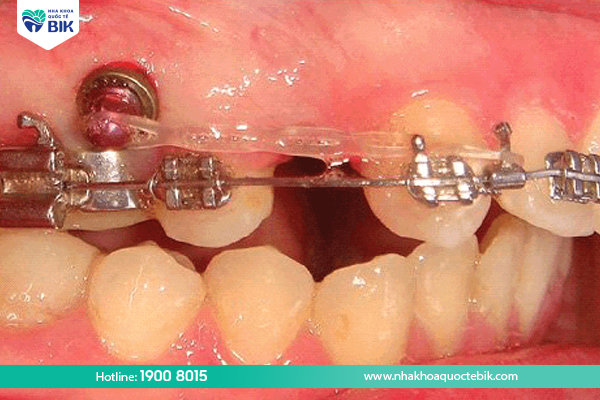
Is closing the space in braces uncomfortable?
When performing the space closing in braces, there may be a feeling of pain and soreness that is stronger than usual. However, there is no need to worry too much because this pain only lasts for the first few days. To relieve pain, you can try the following measures:
- Hot/cold compress: Apply hot or cold water to the painful area to reduce discomfort and pain.
- Rinse with warm salt water: Rinse your mouth with warm salt water in the morning, evening or when you feel pain to reduce pain.
- Take pain relievers: Use pain relievers as directed by your doctor to quickly relieve pain.
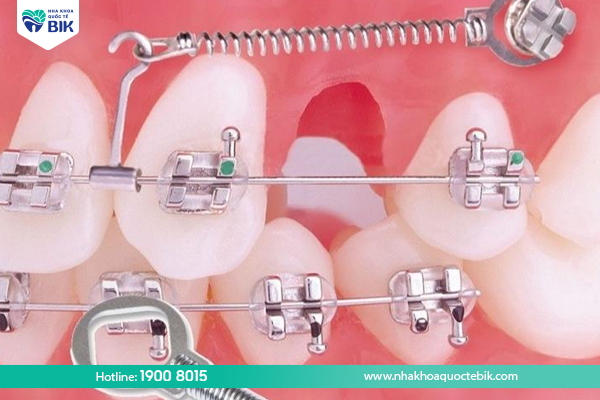
Methods of closing spaces in braces
Below are 3 popular methods of braces today, the decision on which method to use will be specifically advised by the doctor.
Using space-closing hooks
There are many types of space-closing hooks in braces that do not require minivis. However, using this hook can initially cause discomfort because it can hit the cheek and create an uncomfortable feeling, similar to when wearing braces for the first time.
Using minivis
Minivis are small screws placed between the upper or lower teeth, helping to hold the chain of teeth tightly and adjust the pulling force when necessary. They help move teeth more precisely without using complex systems as before.
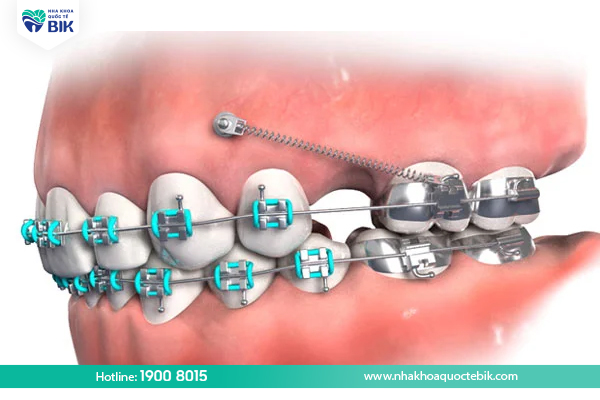
Using elastics to close spaces
Elastics are used to close small gaps between teeth, for example when teeth are misaligned and after straightening, there are still some small gaps. Using elastics will help close the gaps more effectively.
Common problems when closing spaces in teeth
During the process of braces, the following problems may occur, please note to know how to fix them:
- Loose teeth: When teeth move, they may be slightly loose. However, if the looseness persists and causes pain, you should visit a doctor and make timely adjustments.
- Excess wire: The wire is often redundant when the space between the teeth narrows. To avoid damaging your mouth, you can use dental wax or visit your doctor to cut off the excess wire.
- Springs and hooks that scratch the gums and tongue: After placing the springs and hooks, check for comfort by moving your mouth. If you feel uncomfortable, ask your doctor to adjust it. You can also use dental wax or cotton to reduce pain and damage.
That is some basic information about closing the space in braces. Hopefully this article will be useful and help you feel more confident when getting braces. For the braces process to go smoothly, choose a reputable dental address for the best advice and treatment. In which BIK International Dental Clinic will be a reputable orthodontic dental address you can refer to.

